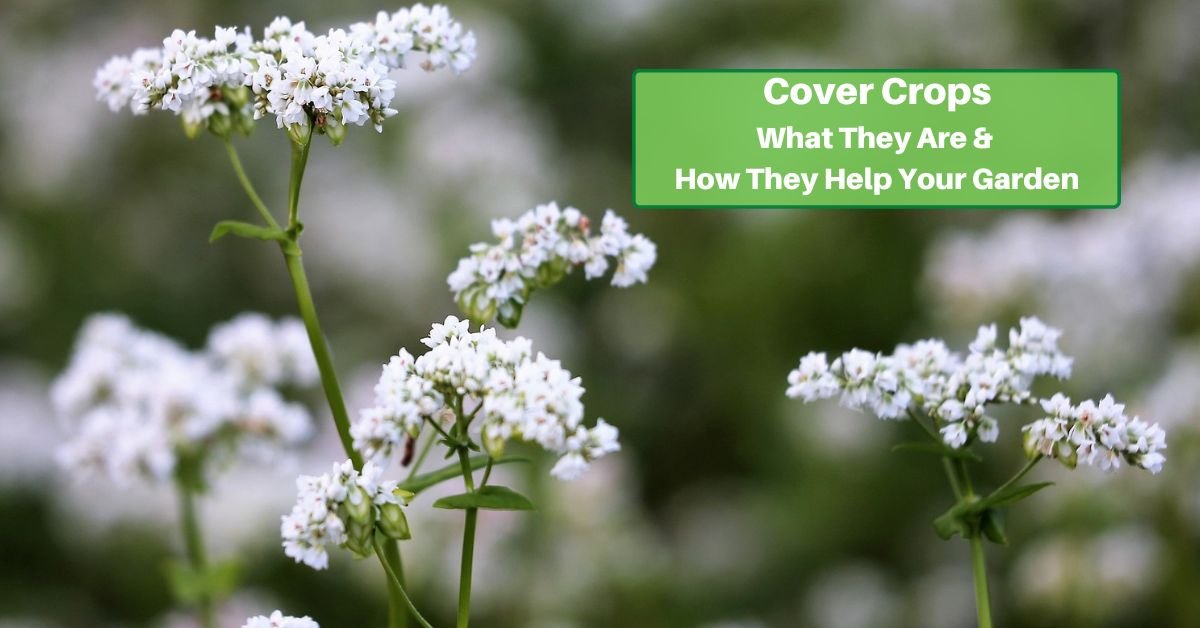Cover crops are often an overlooked but important aspect of successful gardening. They’re unsung heroes that play an important role in maintaining soil health, preventing erosion, suppressing weeds, and even enhancing the overall productivity of your garden.
In this article, we’ll look at the world of cover crops, exploring what they are and why they’re important. We have some suggestions for what the best cover crops for various purposes are. We’ll also share some insights on how to plant and care for them to ensure a flourishing garden.
What Are Cover Crops?
Cover crops, also known as green manure or living mulch, are specific plant species cultivated primarily to protect and improve the soil during periods when the main crop is not growing. Unlike “cash crops,” cover crops are not grown for harvest. But they offer numerous benefits to the garden ecosystem.
The Importance of Cover Crops
- Soil Health: Cover crops help reduce soil compaction, improve soil structure, and enhance microbial activity. This, in turn, increases nutrient availability for future crops.
- Weed Suppression: Cover crops act as a natural weed suppressant. By covering the soil’s surface, they shade out weeds and block their growth, reducing the need for herbicides.
- Erosion Control: The root systems of cover crops help hold soil in place, preventing erosion from wind and water. This is especially important in areas with sloping terrain.
- Nutrient Retention: Certain cover crops, such as legumes, can fix nitrogen from the atmosphere into the soil. This nitrogen can later be utilized by subsequent crops, reducing the need for synthetic fertilizers.
Examples of Cover Crops
Clover
Red and white clover are nitrogen-fixing cover crops that enrich the soil with this essential nutrient. They also attract pollinators, benefiting your garden’s biodiversity.
Rye
Winter rye is an excellent choice for preventing soil erosion and suppressing weeds. It also scavenges excess nutrients from the soil.
Buckwheat
Buckwheat grows quickly and provides an excellent source of nectar for pollinators. It is especially useful for improving soil structure.
Austrian Winter Peas
These peas fix nitrogen in the soil and provide a valuable source of organic matter.
Hairy Vetch
Hairy vetch is a hardy cover crop that excels at fixing nitrogen and preventing erosion. It’s often used in orchards and vineyards.
Order Ground Cover Seeds Online
Planting and Caring for Cover Crops
Planting cover crops isn’t complicated. It just takes a little consideration of timing and maintenance to maximize their benefits.
Timing
The timing of planting cover crops depends on your region and the specific crops you choose. Generally, you’ll want to sow them in late summer or early fall, after the main crop has been harvested. This allows them to get established before winter.
Preparation
Prepare the soil by removing debris and weeds. Loosen the topsoil to ensure good seed-to-soil contact.
Sowing
Spread the cover crop seeds evenly over the designated area. Lightly rake the soil to cover the seeds to the depth specified on the seed packet.
Watering
After planting, water the area thoroughly to ensure proper germination. Keep the soil consistently moist until the cover crop is established.
Maintenance
Depending on the type of cover crop, you may need to trim or mow it down before it goes to seed to prevent self-sowing. This is especially important for cover crops like rye that can become invasive if allowed to spread.
Termination
When it’s time to plant your main crop, get rid of the cover crop by mowing or tilling it under. This provides a green manure that enriches the soil as it decomposes.
Rotation
Rotate the types of cover crops you use each season to maximize soil health benefits and prevent disease and pest buildup. The most effective use will consider the crops you want to harvest and the cover crops as part of a cycle to maximize the soil’s potential.
Incorporating cover crops into your gardening practices is a sustainable and effective way to improve soil health, reduce environmental impact, and increase overall garden productivity. With the right cover crops and appropriate proper care, you can use them to nurture your garden and promote a thriving ecosystem. Your garden will thank you with better harvests and a more resilient soil ecosystem.










